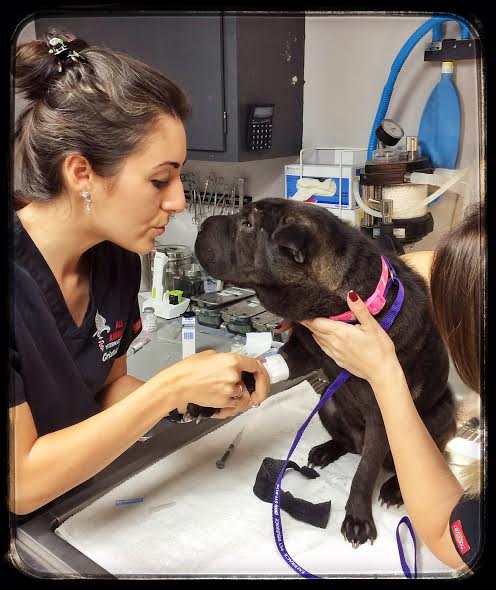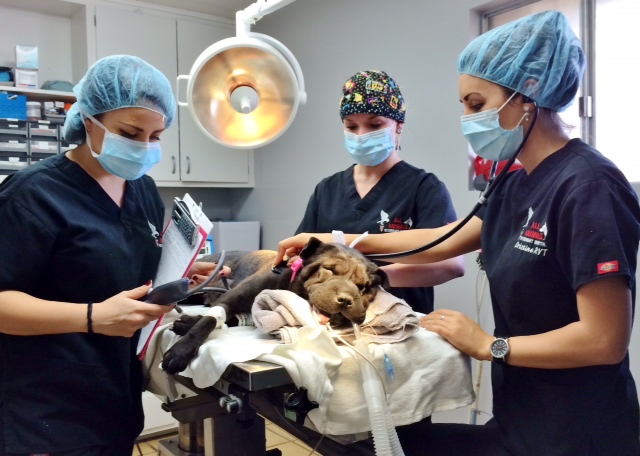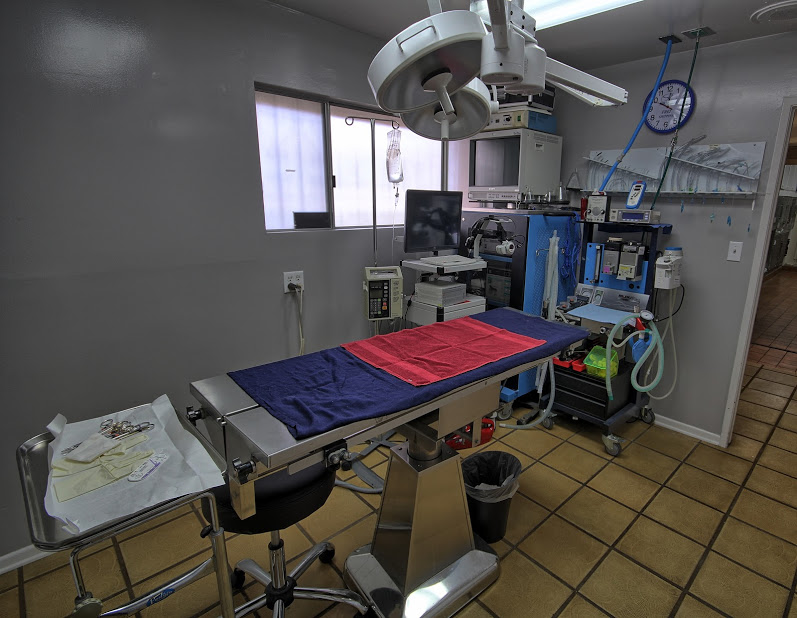All Animals Veterinary Hospital has state-of-the-art anesthesia equipment. We routinely perform presurgical bloodwork on all of our patients in order to rule out any pre-existing conditions that may adversely affect our patients under anesthesia. Every patient has a thorough pre-surgical examination by Dr. Molnar and his technicians. We check your pet’s vitals and look for any physical abnormality that may endanger your pet during anesthesia.

For animals with certain diseases such as heart disease, diabetes, endocrine diseases, and other metabolic diseases, we devise special anesthetic protocols specifically addressing their known illness. Certain anesthetic drugs are chosen in these patients that will not affect the compromised organ. We use a vast array of injectable and gas anesthetics. We not only use isoflurane, which is the most widely used inhalant anesthetic in veterinary medicine, but we also use sevoflurane — and for very critical patients — Desflurane, which is the most advanced inhalant anesthetic. Desflurane is used with a special heated precision vaporizer and is closely related to isoflurane with the most RAPID induction and recovery time. Desflurane is not toxic for the liver or the kidneys since the gas is only metabolized by 0.02% — which is why we use it in patients with liver disease and kidney disease for these important procedures. In our profession it is commonly called the “one breath gas” because the patients recover very quickly. The added benefit of Desflurane is that it is a heated inhalant gas which tremendously increases our success in avian anesthesia, since the biggest problem with avian surgery is heat loss.
Monitoring
Every anesthetic patient has an intensive monitoring system that we routinely use. It includes: IV catheters which allows direct access to the cardiovascular system for fluid therapy, injections in case of any anesthetic emergencies, indirect blood pressure measurements which is one of the most important parameters to measure in an anesthetized patient because it gives us the chance to reverse anesthesia BEFORE more severe complications can occur. We also monitor tissue oxygenation as well as CO2 buildup in the system. Electrocardiography allows monitoring of the heart rate and rhythm on a continuous or intermittent basis. The last important parameter we measure during anesthesia is body temperature. A patient undergoing anesthesia will lose body temperature so we provide eternal heat sources to maintain normal body temperature. We constantly assess the depth of anesthesia to make sure our patients do not feel any pain from the procedures being performed.

Surgery
We provide most veterinary surgical procedures for dogs and cats. We also have two board certified veterinary surgeons that will perform advanced soft-tissue and orthopedic surgeries for our clients on-site at a more reasonable cost with the same quality they would receive at a dog/cat specialty practice. Between Dr. Molnar and our Board certified veterinary surgeons we offer the most comprehensive surgical procedures available in veterinary medicine.
Anesthesia for birds, reptiles, and exotic pets
Anesthesia is used to prevent a patient from experiencing stress and/or pain during routine, elective, or emergency care including surgeries. Anesthesia may be used simply for the collection of data on a patient or to allow your veterinarian to perform procedures in life-threatening emergencies. For instance, a sedative may be used to relax a pet enough to allow for a complete physical exam, blood collection, or radiographs. Use of local anesthesia may make it possible for your veterinarian to perform a short procedure, such as obtaining a tissue sample for biopsy. General anesthesia may be needed for emergencies such as the repair of a broken limb or the relief of egg binding in birds.
Birds, reptiles, and small mammals differ from other pets in that their metabolic rates vary from one species to the next and specific precautions need to be taken when administering anesthesia to these animals. Our veterinarians know that some of these animals eliminate medications at different rates depending upon size of the animal or its body temperatures, thus doses vary significantly among species. In addition, due to their small size or unique methods of maintaining normal body temperature (thermoregulation), some avian and exotic animals may have difficulty maintaining their body heat under anesthesia; therefore, steps must be taken to keep them at optimal body temperature.

Our state-of-the-art surgery room
